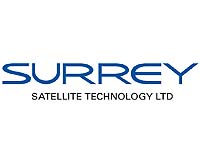 |
Woodland Hills CA (SPX) May 10, 2011 Northrop Grumman's space navigation aid recently provided key guidance and control information that allowed NASA's MESSENGER to become the first spacecraft to successfully orbit Mercury, marking the culmination of a more-than six-year, 4.9 billion-mile journey to the innermost planet. The MESSENGER spacecraft utilizes Northrop Grumman's Scalable Space Inertial Reference Unit (Scalable SIRU), an inertial reference system that supplies critical rotation rate data that enable the stabilization, pointing, and attitude control of satellites and space vehicles. Mercury has been relatively unexplored, in part because of challenges to slowing down a spacecraft sufficiently to enter orbit. This is where the Scalable SIRU made a critical difference. As the sole governing sensor during the Mercury orbit insertion maneuver, the Scalable SIRU provided precise navigation information to guide the spacecraft into a 15-minute engine burn, which markedly slowed the vehicle. Within this narrow window, MESSENGER utilized Mercury's gravitational pull to enter orbit. "We are honored that our Scalable SIRU was a key part of the MESSENGER mission and contributed to this significant navigation achievement," said Susan Sloan, vice president of space systems for Northrop Grumman's Navigation Systems Division. "The high reliability of the hemispherical-resonator gyro was ideal for such an important mission, which is sure to pay off as we learn more about this elusive planet." The Scalable SIRU is the industry standard for high-precision, long-life attitude control solutions supporting commercial, government and civil space missions. At the heart of the Scalable SIRU is Northrop Grumman's patented hemispherical resonator gyro (HRG) technology. HRGs have been used in space without a mission failure for more than 17 million operating hours accumulated since the product first entered service in February 1996. Installed in Northrop Grumman's space-qualified inertial reference units, the HRG has been used in commercial, government and civil space missions for domestic and international customers and has been launched aboard more than 100 spacecraft. The MESSENGER mission, which began on Aug. 3, 2004, marked the first deployment into space for the Scalable SIRU. Throughout the mission, the Scalable SIRU provided navigation information for several "flybys" or gravitational assists that allowed the spacecraft to reduce speed from a planet while circling the sun. The mission included one flyby of Earth, two of Venus and three of Mercury-all setting up the spacecraft on its course to Mercury and the inner reaches of the solar system. MESSENGER marks the second success for NASA's Discovery program using the Scalable SIRU. In 2005, the Deep Impact mission also utilized the Scalable SIRU during a journey to comet Tempel 1, making it the first space mission to probe beneath the surface of a comet to reveal the secrets of its interior.
Share This Article With Planet Earth
Related Links - Space Technology News - Applications and Research
 SSTL delivers groundstation equipment for UK operational space HQ
SSTL delivers groundstation equipment for UK operational space HQGuildford, UK (SPX) May 09, 2011 As part of the Astrium-led Earth Observation (EO) Hub project at the International Space Innovation Centre (ISIC) in Harwell, small satellite pioneer Surrey Satellite Technology Ltd (SSTL) has completed the installation of key groundstation equipment. The ISIC groundstation can be used to operate existing and future UK space missions. This comprehensive new system provides everything neede ... read more |
|
| The content herein, unless otherwise known to be public domain, are Copyright 1995-2010 - SpaceDaily. AFP and UPI Wire Stories are copyright Agence France-Presse and United Press International. ESA Portal Reports are copyright European Space Agency. All NASA sourced material is public domain. Additional copyrights may apply in whole or part to other bona fide parties. Advertising does not imply endorsement,agreement or approval of any opinions, statements or information provided by SpaceDaily on any Web page published or hosted by SpaceDaily. Privacy Statement |